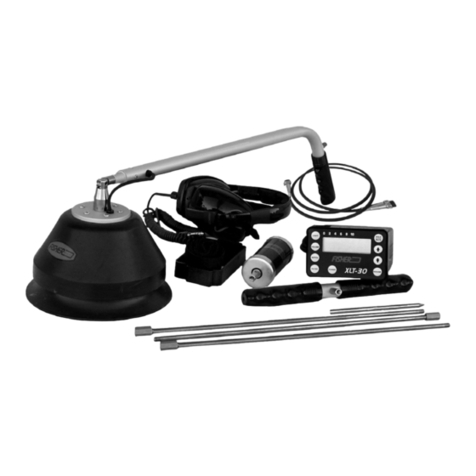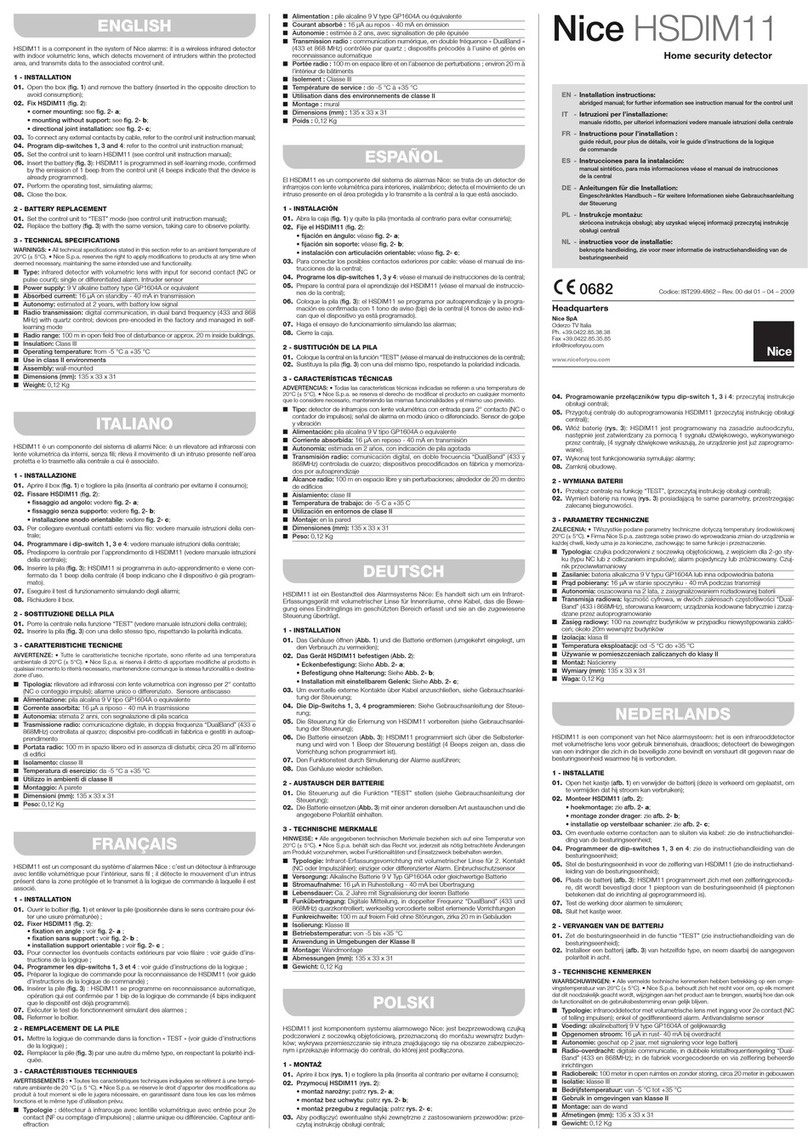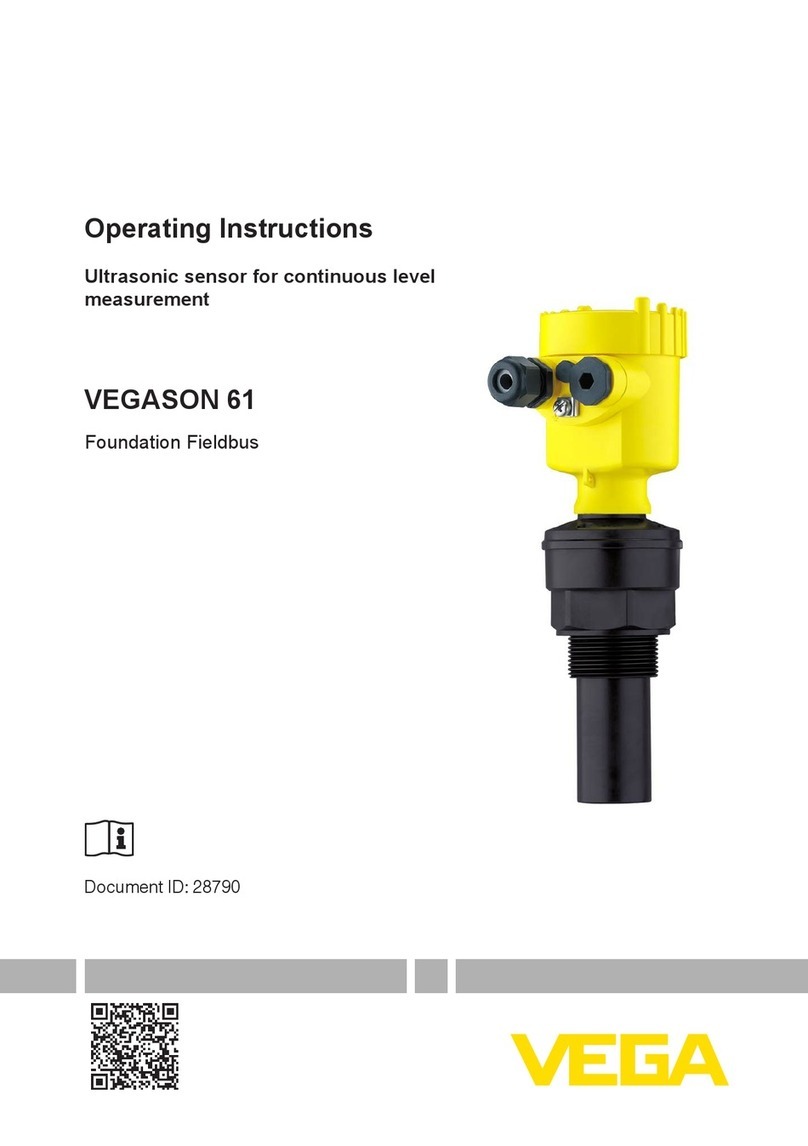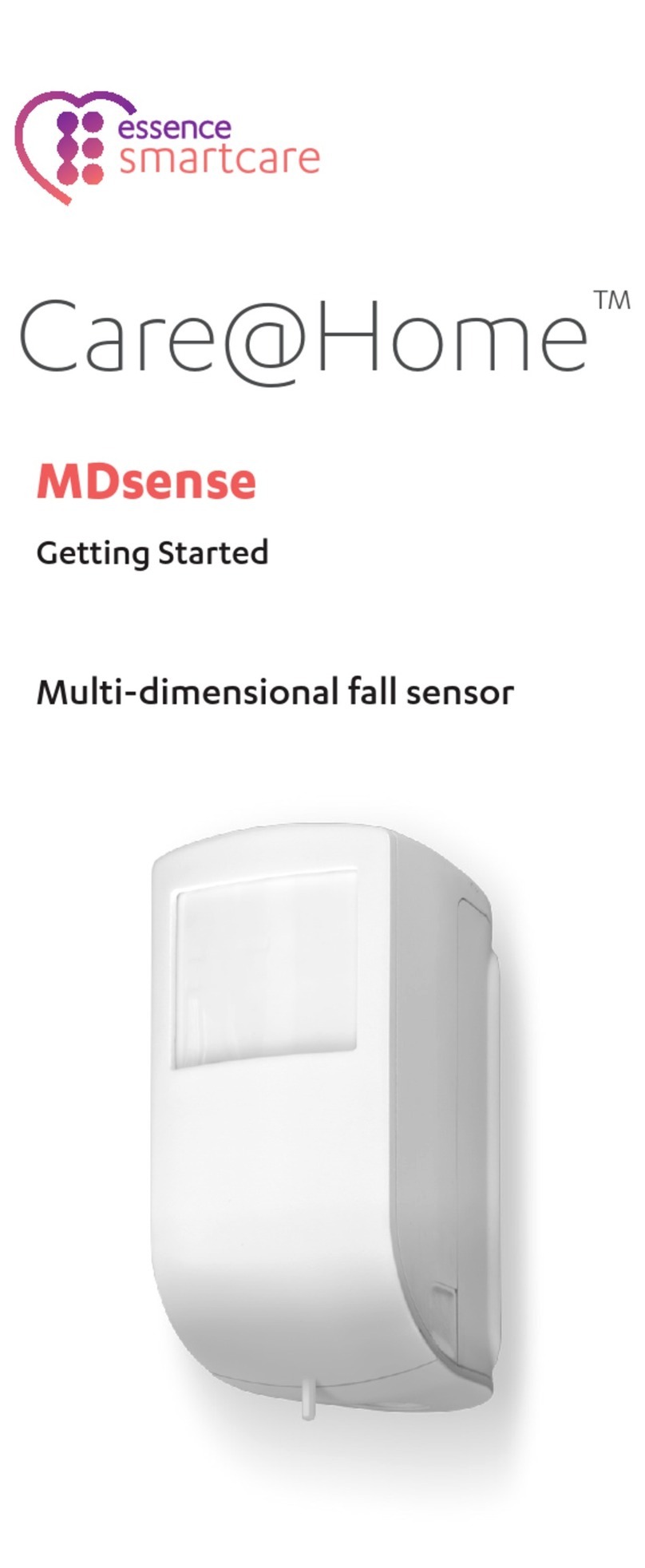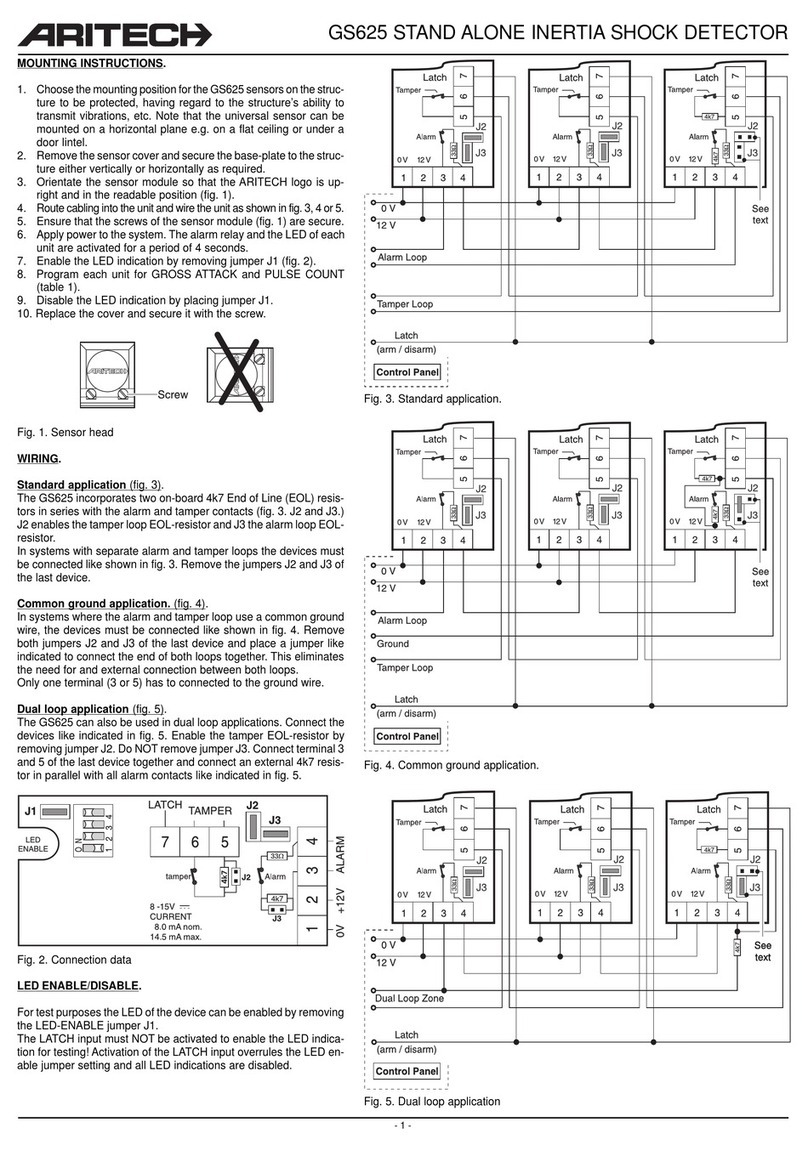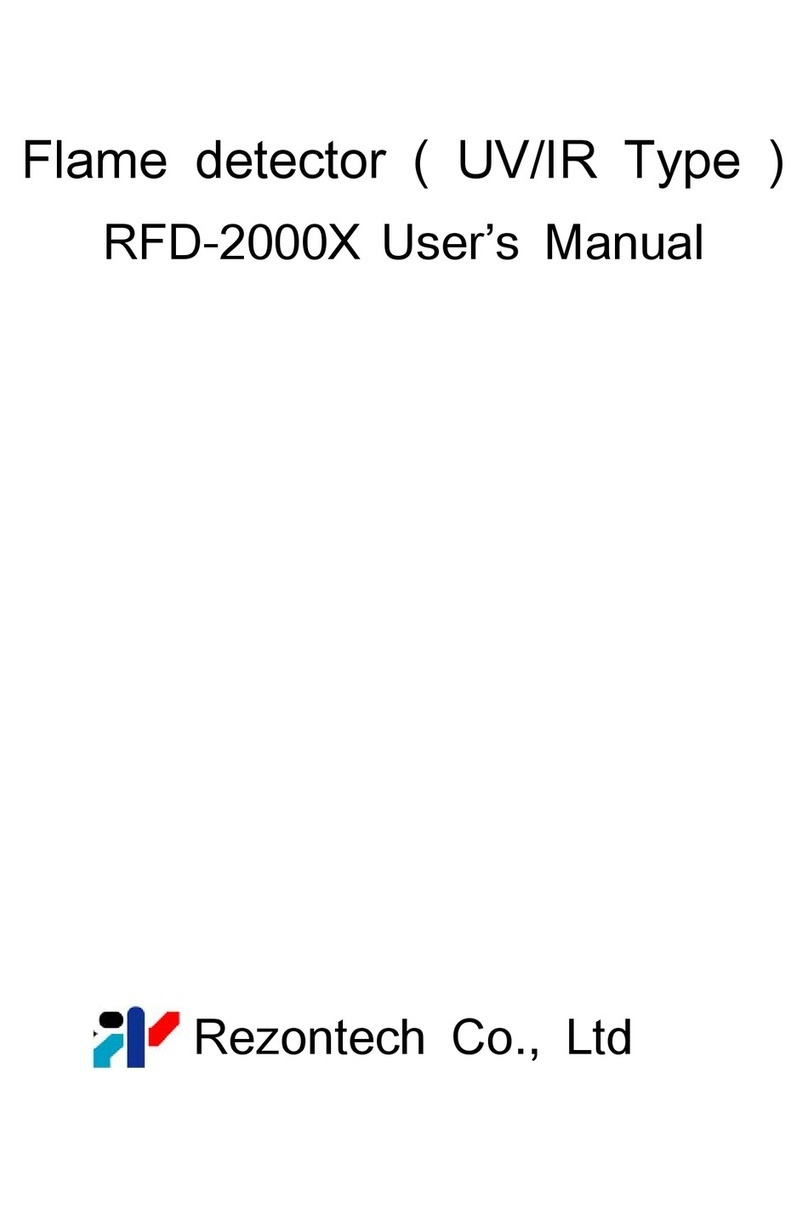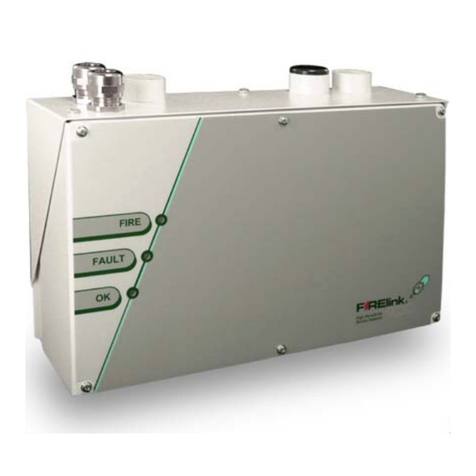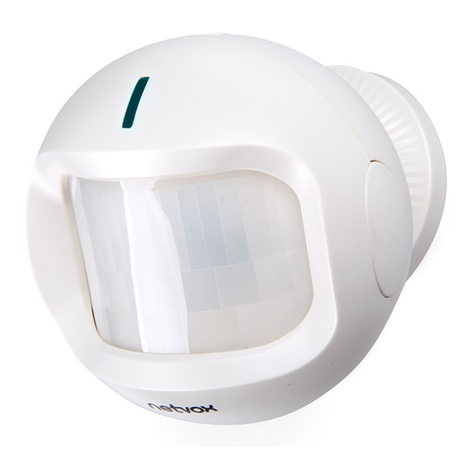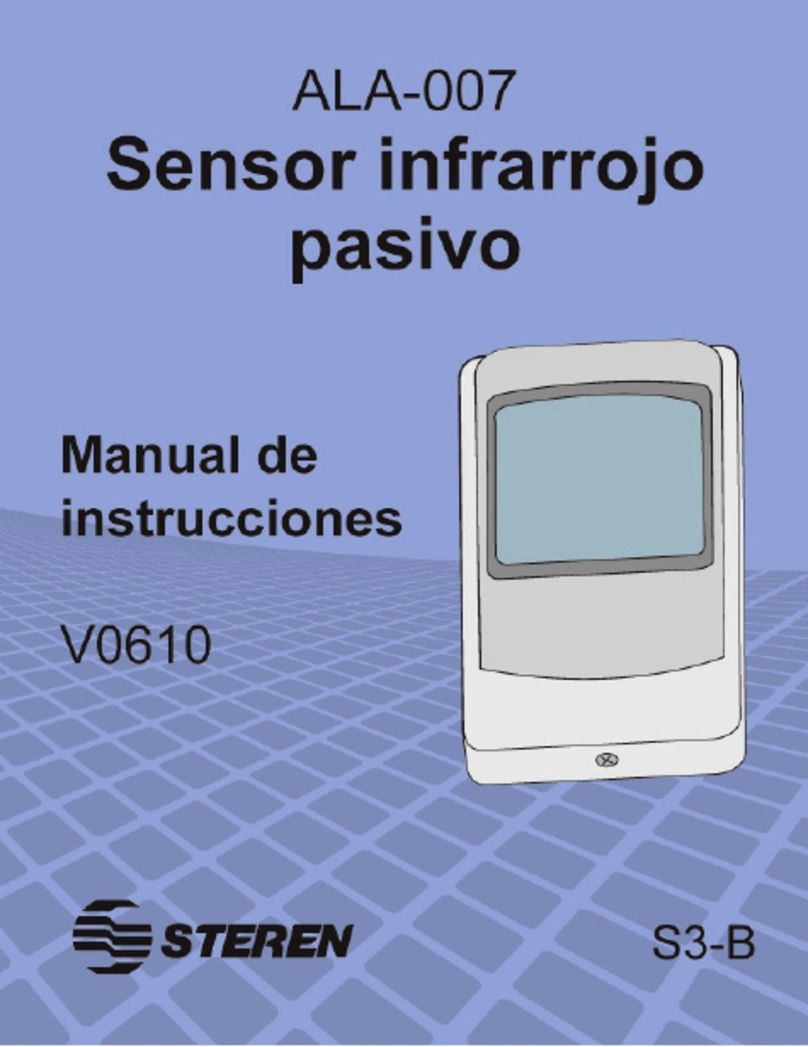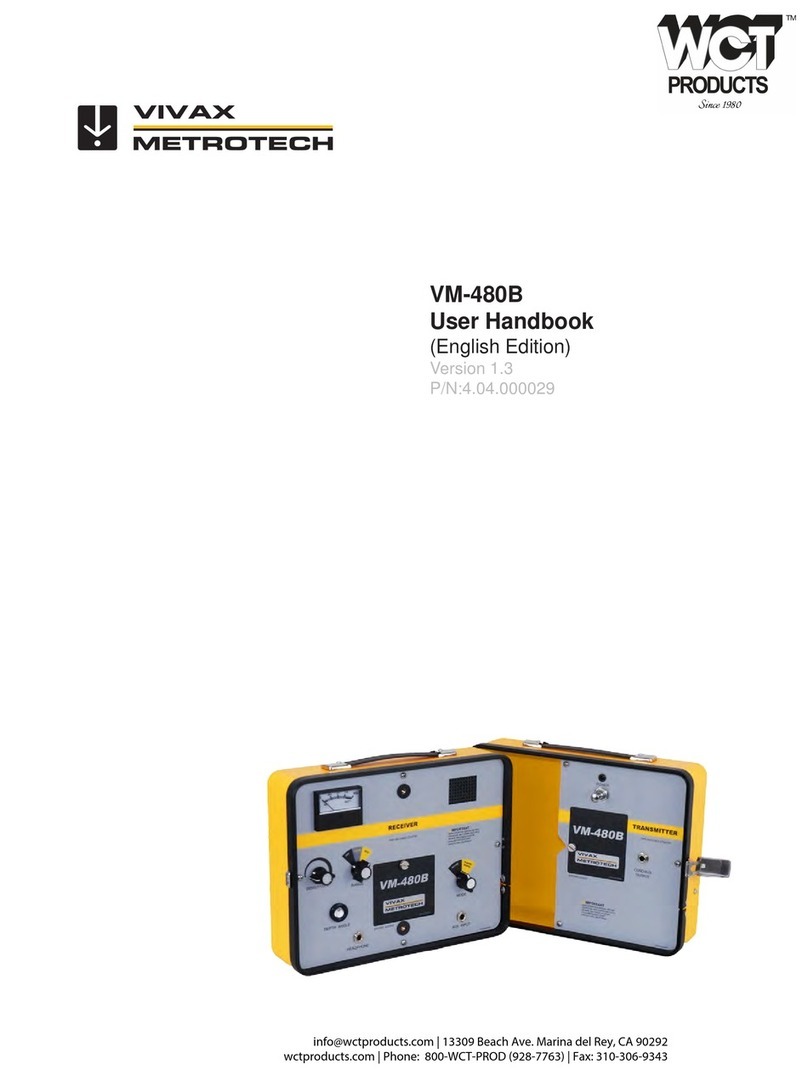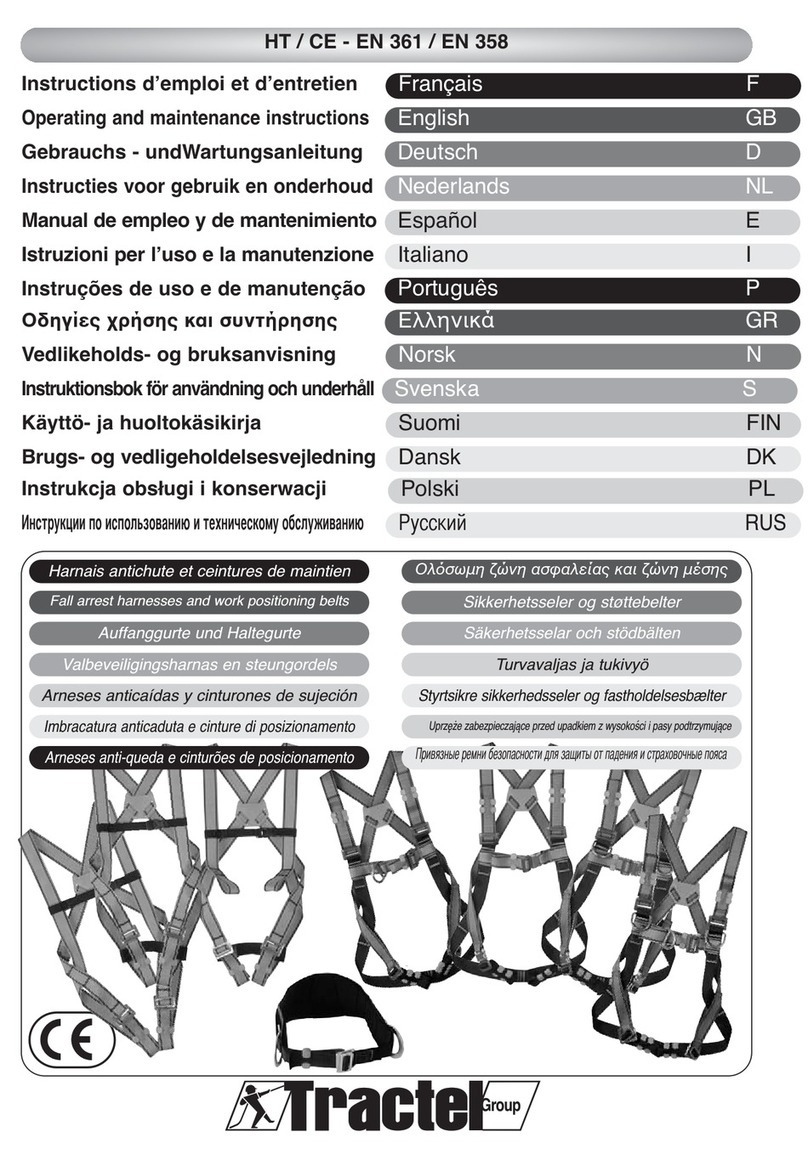Fisher Labs XLT-30 User manual

INTRODUCTION
Fisher Research Laboratory has always been a leader in the eld
of acoustical leak detection. From the early LT-10 through the
XLT-30, high quality sound amplication has been synonymous
with the Fisher name .
Fishers XLT-30 takes leak detection to a new level. Ultra sensitive
sound microphones, combined with a non-distortion amplication
system and crystal clear audio headphones make the XLT-30
the leak detector destined to set new standards for the leak
professional.
CONTENTS
Introduction ...............................................................................pg. 2
Headphones..............................................................................pg. 2
Instrument Set ............................................................................pg. 3
Control Panel.............................................................................pg. 6
Operating Instructions ..............................................................pg. 8
Use of the Multi-Sensor..............................................................pg. 9
Specications ............................................................................pg. 11
2
USING HEADPHONES
Using headphones (not supplied) improves battery life, and
prevents the sounds from annoying bystanders.
It also allows you to hear subtle changes in the sound more
clearly, particularly if searching in a noisy location. For safety
reasons, do not use headphones near trafc or where
other dangers are present. This device is to be used with
interconnecting cables/headphone cables shorter than three
meters.

3
INSTRUMENT SET
1
1
1
2
6
3
4
5
6
3
5
4
2A
6
4
8
8
8
2B
OPTION A
OPTION C
OPTION B
5A
7
7

1. Control Box
All listening and ltering controls for the XLT-30 are contained in this sturdy
housing. The function of each control is described in the section entitled
“Faceplate and Controls”.
2. Big Foot Sensor - OPTION A
Also known as the Ground Microphone, this sensor is to be used on hard
surfaces, concrete, asphalt, tile, etc. A fl exible rubber shield helps pre-
vent outside sounds from interfering with the sounds from the buried pipe.
Press and hold the red button near the handle to mute the audio from
the probe and suppress loud sounds when the probe is moved.
2A. Little Foot Assembly - OPTION C
About the size of a computer mouse, this small handheld sensor is de-
signed for areas that the Big Foot Sensor can not t into. The Little Foot
assembly is normally used for leak detection inside buildings. Mute is
activated by pressing the button in front of the Little Foot Assembly.
2B. Multi-Sensor - OPTION B
Fisher’s new MULTI-SENSOR has superior leak detection capabilities. In an
extremely compact design, Fisher has achieved higher performance,
improved audio clarity, improved sensor electronics, and better sensitivity
to leaks with less background noise – all with heavy duty characteristics
of the trusted Big Foot. The MULTI-SENSOR is used for both the ground
microphone and direct contact applications – the one sensor that does
it all. Fisher’s NEW XLT-30 MULI-SENSOR combo sets the new standard for
leak detection.
3. Hydrophonic Cylinder Probe
This probe is a direct contact probe designed to make direct connection
to the pipe, or any portion of the pipe that is accessible. Used in any
combination of Sound Rods with the T-Handle, pipes can be accessed
to distances up to nearly 6 feet away.
Another feature of the Cylinder Probe is the ability to listen to pipe noise
in pipes that are buried in turf, or soft surfaces. Accurate pipe location
is essential for the placement of the Ground Rods as close to the pipe
as possible.
On top of the Cylinder Probe is a three position toggle switch for mute,
listen, and momentary listen. As with all mute controls, learn to use them
wisely.
When tightening the sounds rods to the Hydrophonic Probe, secure the
connector with a wrench as to not let it twist. Twisting of that connector
could damage wiring on the inside of the probe.
INSTRUMENT SET
4

5
4. Sound
Rods
Two different sizes are included with the XLT-30. Rods give the user vari-
ous lengths for direct or indirect contact to pipes.
5. T-Handle
This handle is used primarily with the Cylinder Probe and the sound
rods.
5A. Multi-Sensor Handle
This handle is used with the Multi-Sensor
6. Headphones
These headphones are designed to deliver the clearest sound with the
least distortion. The Volume knob can be used to adjust the audio level.
Unplugging the headphones will turn off the XLT-30. When the XLT-30 is
turned off, any modications to the Volume, Notch, and Filter will return
to the factory presets.
7. Probe Cable (Option A & C)
This cable attaches at the back of the Control Housing to any of the
various probes. Make sure the jack is fully inserted and the lock nut is
hand tightened.
8. Carrying Strap/Housing Mounting Bracket
The attachment system for the XLT-30 consists of a plastic mounting
bracket that slides from the bottom of the control housing up to the bezel
around the faceplate. There are two slots for attaching an adjustable
strap that hangs around the neck of the user.
INSTRUMENT SET
Test Equipment Depot - 800.517.8431 - 99 Washington Street Melrose, MA 02176
TestEquipmentDepot.com

CONTROL PANEL
POWER
This pad turns the XLT-30 on or off. When the instrument is turned Off, all set-
tings, or modications to settings default to the preset factory settings.
LIGHT
Press Light pad to turn the back light on or off. Prolonged use of the back
light will have minimal effect on the battery life of the XLT-30.
VOLUME
Press Volume pad to modify the volume of the XLT-30. The arrow keys (up
arrow/down arrow) increase or decrease the volume to the headphones.
Use the headphones volume knob to reduce audio as desired.
NOTCH
This control allows the user to mask or reject a small range of frequency
response. Its purpose is to eliminate a sound (i. e. motor, humming, fans,
etc.) that may be interfering with the leak sound. The notch setting can
be moved with the arrow keys.
FILTER
The XLT-30 has four different ltering modes.
AL (All Frequencies) – This is the No Filter feature of the XLT-30. No
modications to the signal can be made with the arrow keys. Frequency
range of the All Frequency setting is from 60 Hz to 6 kHz.
6

7
(The following lter modes have a frequency range from 60 Hz to 2.4
kHz)
HI (High Range) – This ltering mode allows the user to adjust the
response in the higher areas of the frequency range. Use the arrow keys
to increase or decrease this frequency response range.
LO (Low Range) – Similar to the previous lter mode, the lowpass
lter allows the user to listen to the lower areas of the frequency range.
The arrow keys are used to increase or decrease this frequency response
range.
FC (Frequency Choice) – This lter could also be called Frequency
Select. This mode allows tuning to the frequency that gives the user the
best response. The arrow keys are used to move the cursor, selecting a
narrow frequency band of choice
HOLD/MUTE
This dual purpose button is both a mute control and a peak hold
reset control.
Mute – As the name applies, muting disengages the sound to the
user. There is also a control on all listening microphones. Learn to use
this control to prevent excessive noise to your ears when the probes are
moved.
Hold – The display of the XLT-30 will show the highest sound level
recorded. This reading can be reset by pressing this pad. Resetting the
Peak Hold clears earlier readings of the Peak sound.
ARROW KEYS
These keys allow features of the XLT-30 to be modied.
RESUME
After any modication has been made to the XLT-30 (VOLUME, NOTCH,
or FILTER), depressing the RESUME will return the display screen back to
a Meter function (Sound Graph).
CONTROL PANEL

OPERATING INSTRUCTIONS
Set Up
1. Assemble control housing, headset, and your choice of listening probe.
The headset must be plugged in for the XLT-30 to operate.
2. Press POWER pad to turn On the XLT-30. The XLT-30 goes through a ve
second warm up before the touch pads are functional. During this time,
the display screen gives information of battery level. A reading of 68 or
below will activate the “Low Battery” indicator. The XLT-30 does have a
usage buffer between the “Low Battery” indicator and complete system
shut down to allow you to complete a job.
3. The XLT-30 always turns on to the default settings. Volume is at the me-
dium setting, lter is in the All Pass (no lter) mode, and the notch control
is at the midway point. The display screen will show the sound intensity
in a bar graph form (Sound Graph) and two digit display.
4. Familiarize yourself where the mute buttons (and pad) are. Remember
to mute the XLT-30 when moving any probe.
5. Press the VOLUME pad to modify headset volume. Use the ARROW
pads to increase or decrease the volume. The display screen will show
the volume level in a graph form. Press the RESUME pad to exit volume
modication and return the display screen to the Sound Graph func-
tion. (Remember that the volume can be adjusted at the headphones
also.)
6. Begin your leak detection search.
Modications During Leak Search
Some leaks are small in size, and unrecognizable, or conditions are such
that very little leak sound can be recognized, so you may need to make
changes to the lter(s) in order to hear leaks. Depending upon the type
of pipe composition and soil (ground) type, different lter settings will
increase your ability to hear the leak sound.
Adjustment to the lter is done by pressing the FILTER pad which will
allow you to scroll through four different lter types. Frequency range
modications can be made to the HI, LO, and FC lters. As you are
choosing your lter, the display screen will give a visual display of the
lter type being used, and the frequency range of that lter. After your
selection and modication is made, depress the RESUME pad to return
to the Sound Graph function of the display screen.
8
Test Equipment Depot - 800.517.8431 - 99 Washington Street Melrose, MA 02176
TestEquipmentDepot.com

9
Use of the Notch Filter
Occasionally, you may come across a sound that may be
masking or covering your ability to adequately hear any leaks.
This may be caused by nearby motors, fans, or many other
annoyances. (Unfortunately, the most common are sounds
caused by automobiles and traf c). The XLT-30 has a notch, or
reject feature, that will assist in eliminating that sound from your
frequency range.
Press the NOTCH pad, and use the ARROW pads to move the
cursor to the point where the annoying sound is eliminated or at
its weakest. Depress the RESUME pad to set the notch function.
(Hint: Depress the FILTER pad to go directly to the FILTER mode.
Now you can choose the type of Filter you wish to use AND still
have the annoying sound Notched).
Use of the Multi-Sensor (OPTION B)
Unlike our other sensor, this new sensor was designed for locating
leaks in all types of surface conditions. The new sensor construction
will allow leak detection to be performed on hard surfaces such
as concrete, asphalt, tile, etc, as well as listening to water leaks
under turf or soft surfaces.
OPERATING INSTRUCTIONS
as concrete, asphalt, tile, etc, as well as listening to water leaks
On hard surfaces, the muti-
sensor sensor is used to pick
up the vibrations generated
by a buried ruptured pipe
located underneath sidewalks
or paved streets. The rubber
housing diaphragm is
designed to reduce external
sounds while the sensor rests
on a hard surface and detects
the vibrations traveling
underground.

NOTE: This equipment has been tested and found to comply with the limits
for a Class B digital device pursuant to Part 15 of the FCC Rules. These
limits are designed to provide reasonable protection against harmful
interference in a residential installation. This equipment generates, uses,
and can radiate radio frequency energy and, if not installed and used
in accordance with the instructions, may cause harmful interference to
radio communications. However, there is no guarantee that interference
will not occur in a particular installation. If this equip ment does cause
harm ll interference to radio or television reception, which can be
determined by turning the equipment off and on, the user is encouraged
to try and correct the interference by one or more of the following
measures:
- Reorient or relocate the receiving antenna.
- Increase the separation between the equipment and the receiver.
- Connect the equipment into an outlet on a circuit different from that
to which the receiver is connected.
- Consult the dealer or an experienced radio/TV technician for help.
10
When utilizing the multi-sensor for direct
connection to a pipe, or listening to buried
pipes located in soft ground or under a
turf surface, you will need to use the T-
Handle and sound rods included with the
unit. Using a threaded spacer provided on
the extension handle, carefully attach it
directly onto our sensor probe. Assemble
the T- Handle by snapping both the
extension handle and probe handle
sections together. Sound rods are then
secured to the threaded coupler on the
T- Handle assy. Sound rod lengths will be
determined on its application.
USE OF THE MULTI-SENSOR (OPTION B)
SPECIFICATIONS

Subject to improvement or modication without notice.
Fisher Research Laboratory does not warrant suitability to specic use.
Fisher Research Laboratory shall in no event be liable for any direct, incidental, conse-
quential or indirect damages.
SPECIFICATIONS
11
Operating frequency: 60 Hz – 6 kHz, Gain = 95 db
20 Hz – 60 Hz, Gain > 90 dB
Filter types and frequency ranges:
All Pass: 60 Hz to 6 kHz
Low Pass: ....................... Adjustable cut-off frequency from 150 Hz to 2.4 kHz
High Pass:....................... Adjustable pass-band frequency from 150 Hz to 2.4 kHz
Band Pass: ..................... Adjustable center frequency from 150 Hz to 2.4 kHz
Notch Filter: ...................
Adjustable center frequency rejection from 150 Hz to 2.4 kHz
Can be used simultaneously with any lter option
Indication of output:
Audio: ............................ High performance head phones (64 ohms)
Visual:............................. LCD bar graph display w/2 digit numerical read out.
Grade of protection:.................... Splash proof
Battery test..................................... Automatic
Type of Battery/Quantity ............. Alkaline 9 volt, 2
Battery life:..................................... Approximately 50 hours
WEIGHT:
Option “A” Option “B” Option “C”
19 lbs 10 lbs 9.5 lbs
ACCESSORIES:
Option “A” Option “B” Option “C”
Little Foot Big Foot Big Foot
Multi-Sensor Hydrophonic Cylinder Probe Multi-Sensor
Little Foot
STANDARD EQUIPMENT:
Option “A” Option “B” Option “C”
Plastic case Plastic case Plastic case
Operation manual Operation manual Operation manual
Control unit Control unit Control unit
Head phones Head phones Head phones
Big Foot Multi-Sensor Little Foot
Hydrophonic Cylinder Probe Carry Strap Hydrophonic Cylinder
Probe
“T” Handle Housing Bracket Probe Cable Assembly
Probe Cable Assembly Probe Cable Assembly “T” Handle
Carry Strap Sound Rods Carry Strap
Housing Bracket Housing Bracket
Sound Rods Sound Rods
Other manuals for XLT-30
1
Table of contents
Other Fisher Labs Security Sensor manuals
Popular Security Sensor manuals by other brands
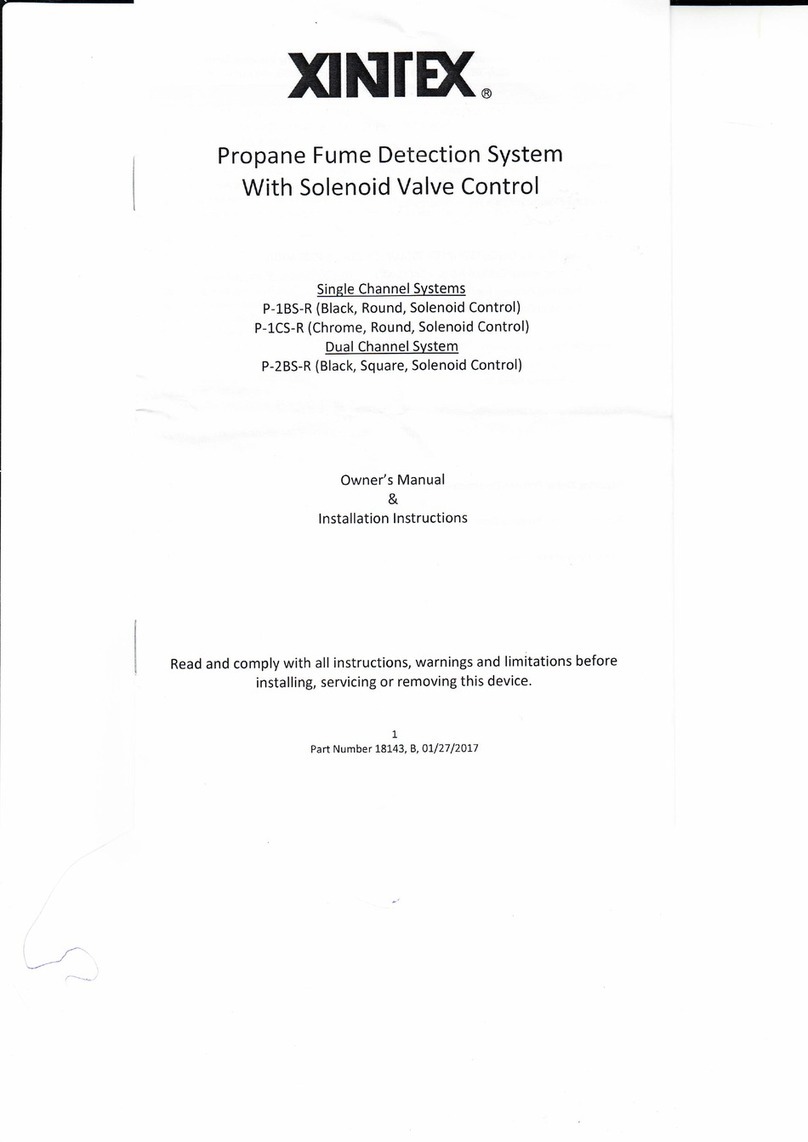
Xintex
Xintex P-1BS-R Owners Manual & lnstallation lnstructions
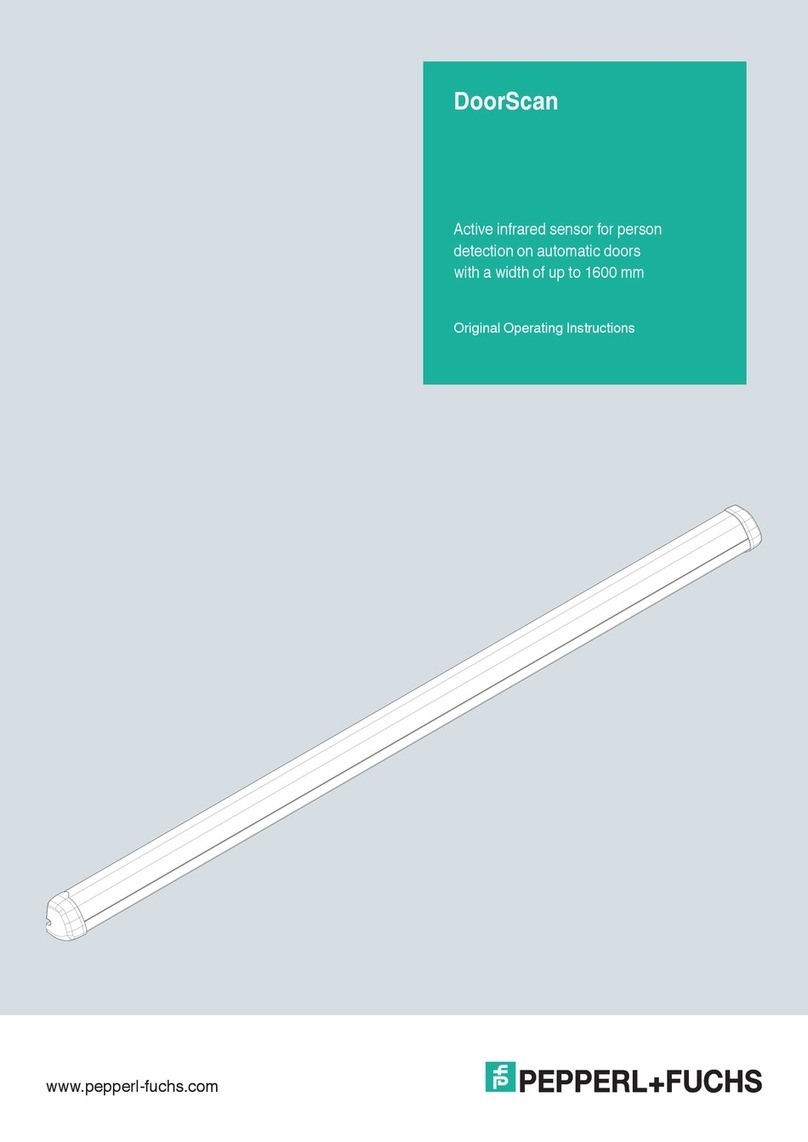
Pepperl+Fuchs
Pepperl+Fuchs DoorScan Original operating instructions
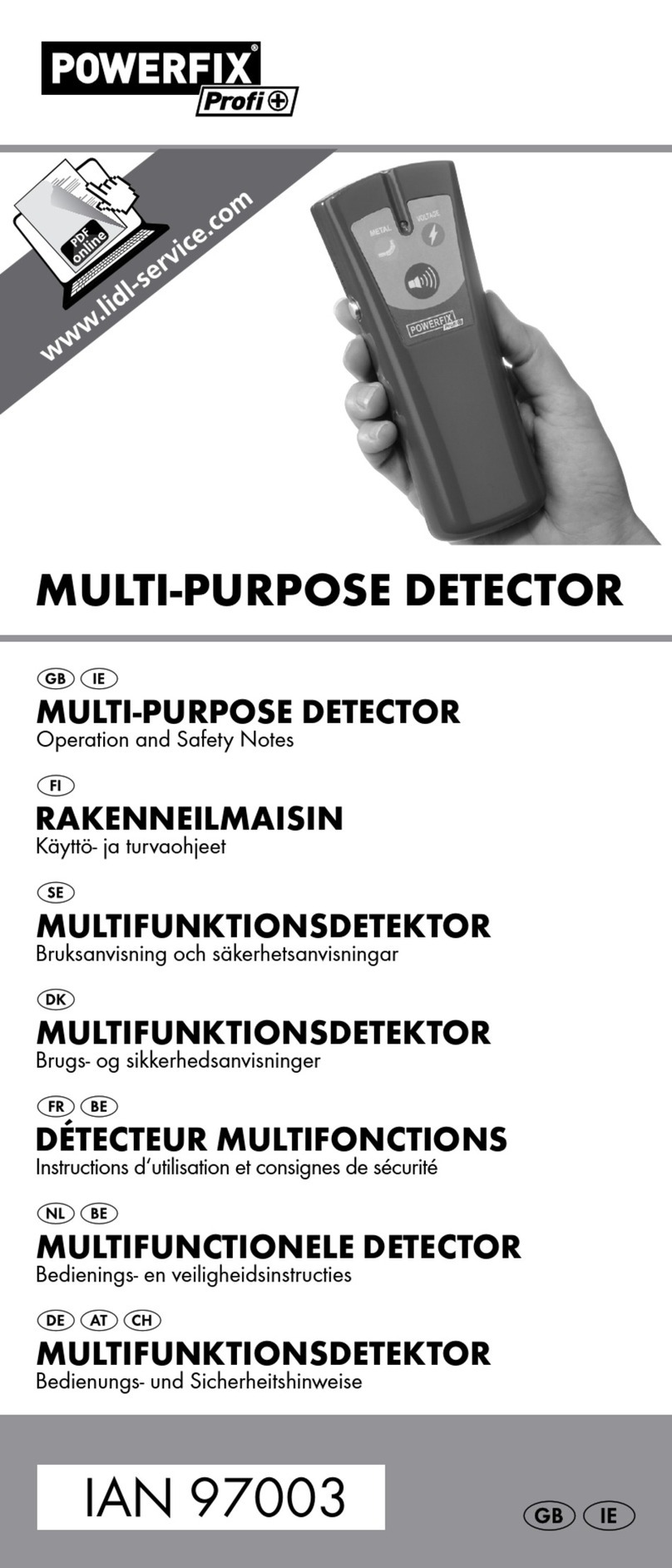
Powerfix Profi
Powerfix Profi 97003 Operation and safety notes
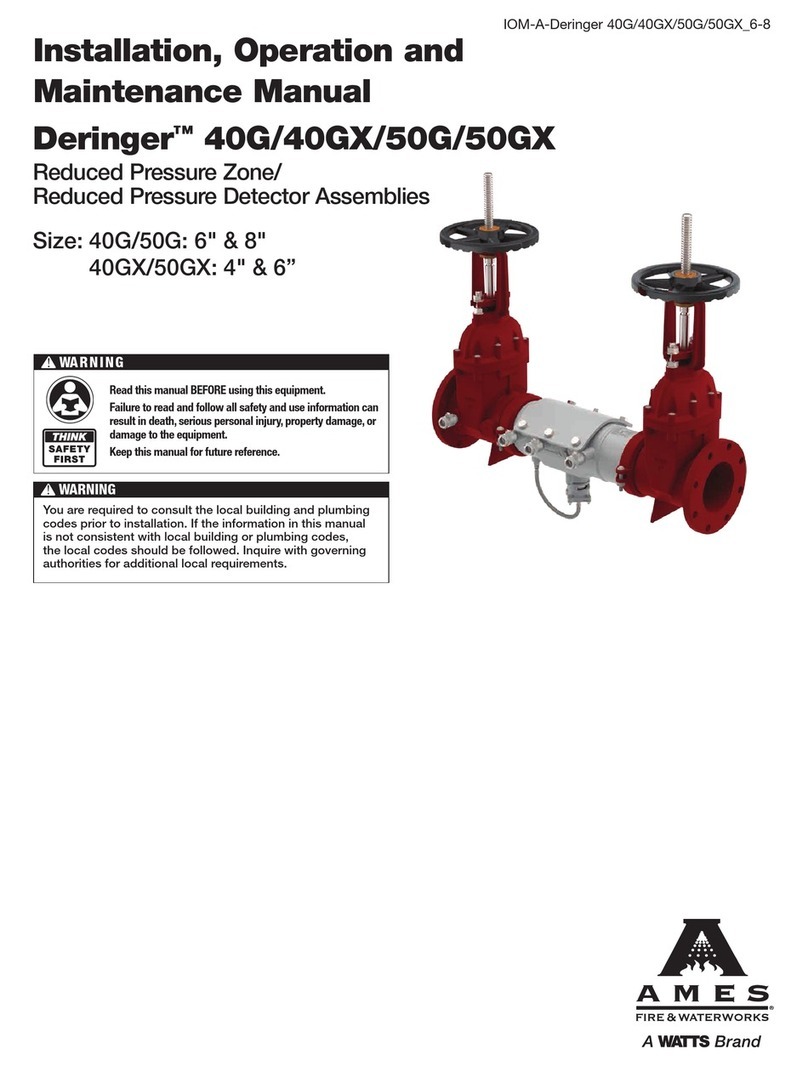
Watts
Watts AMES Deringer 40G Installation, operation and maintenance manual
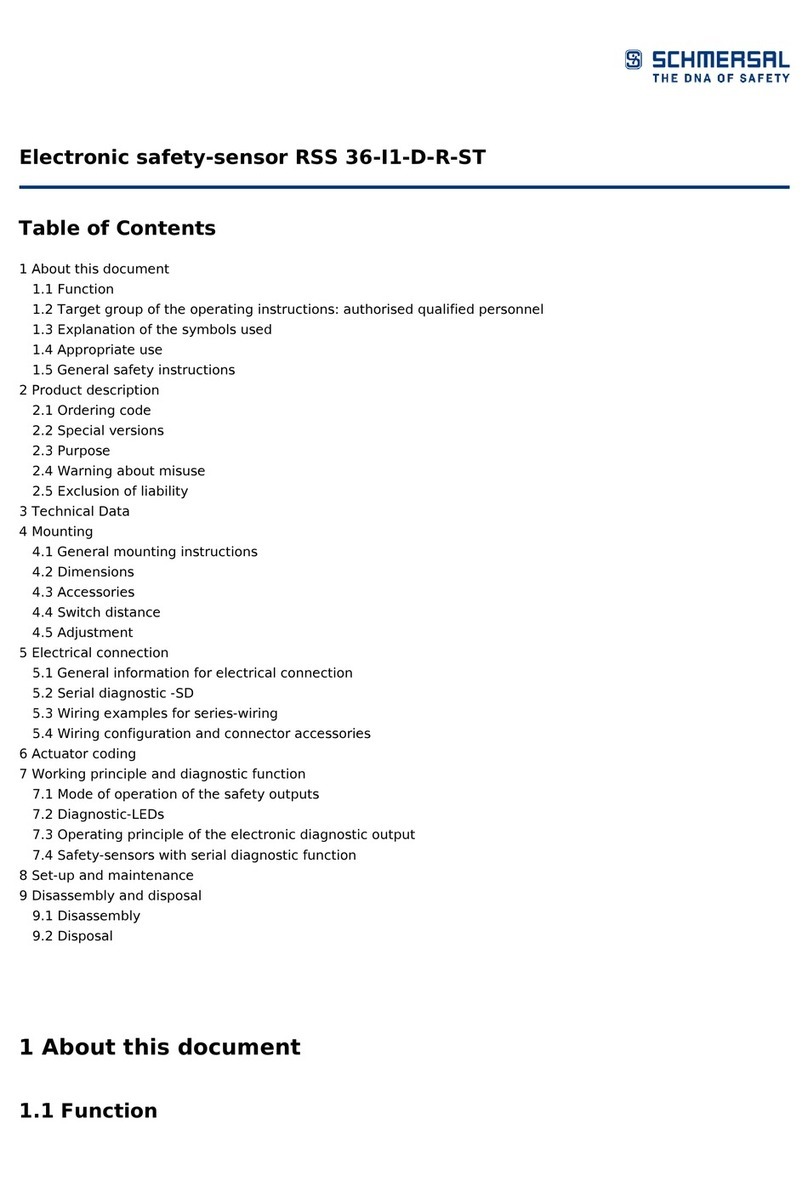
schmersal
schmersal RSS 36-I1-D-R-ST manual
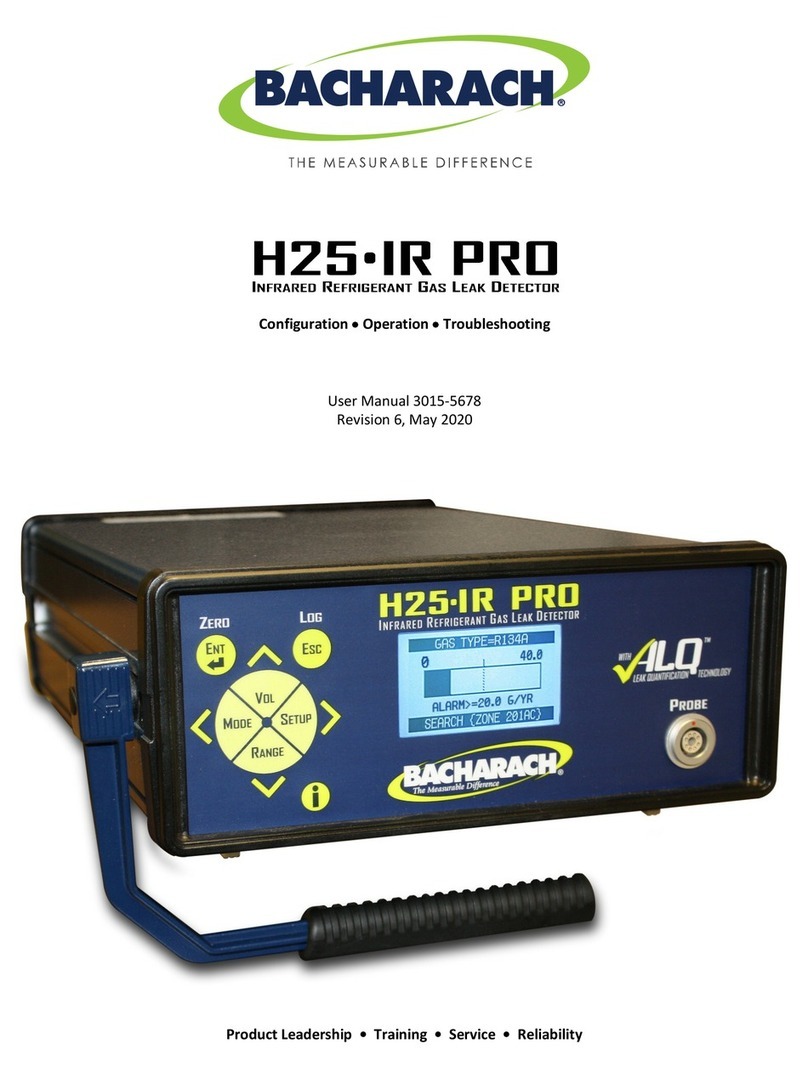
Bacharach
Bacharach H25-IR PRO user manual


